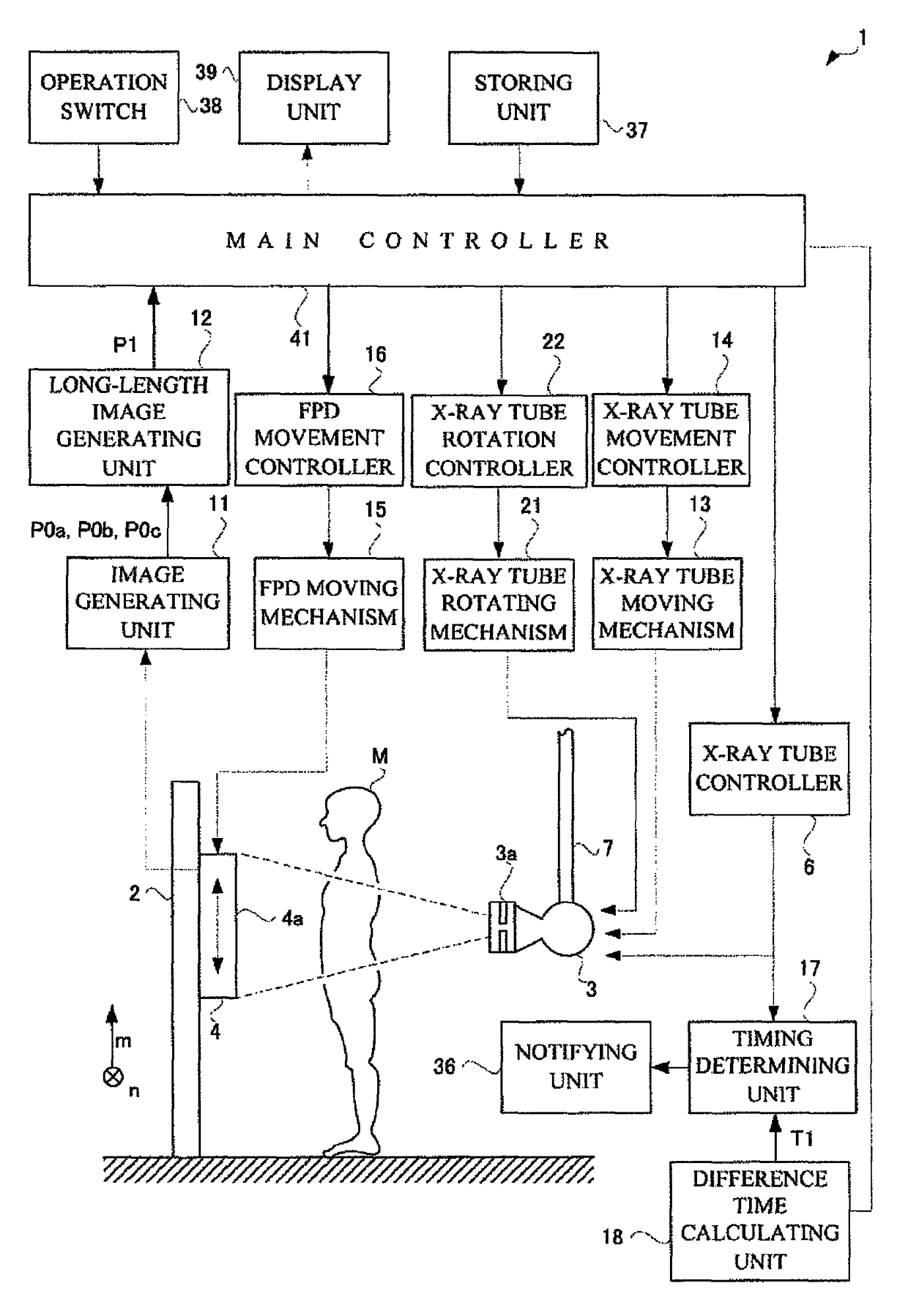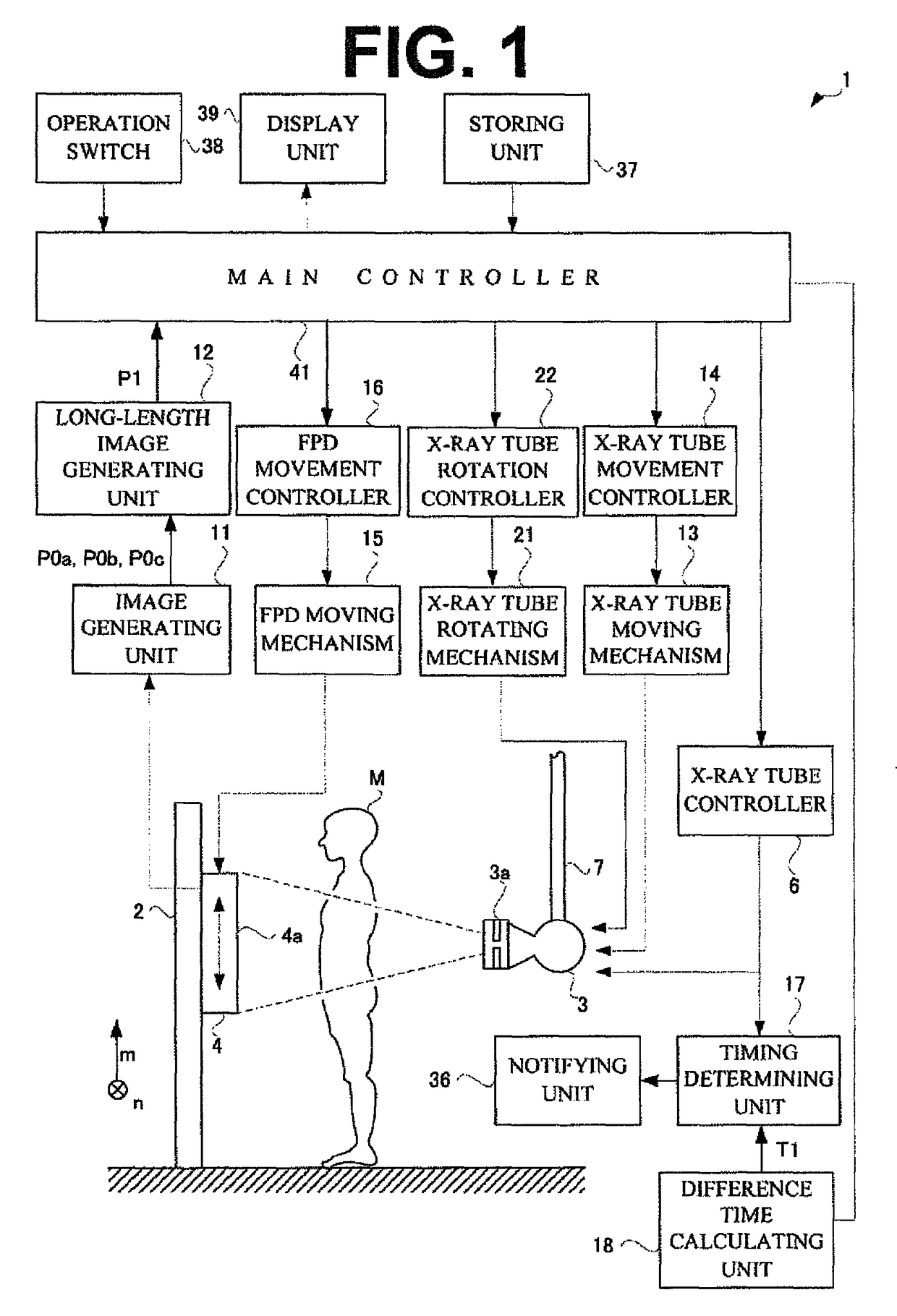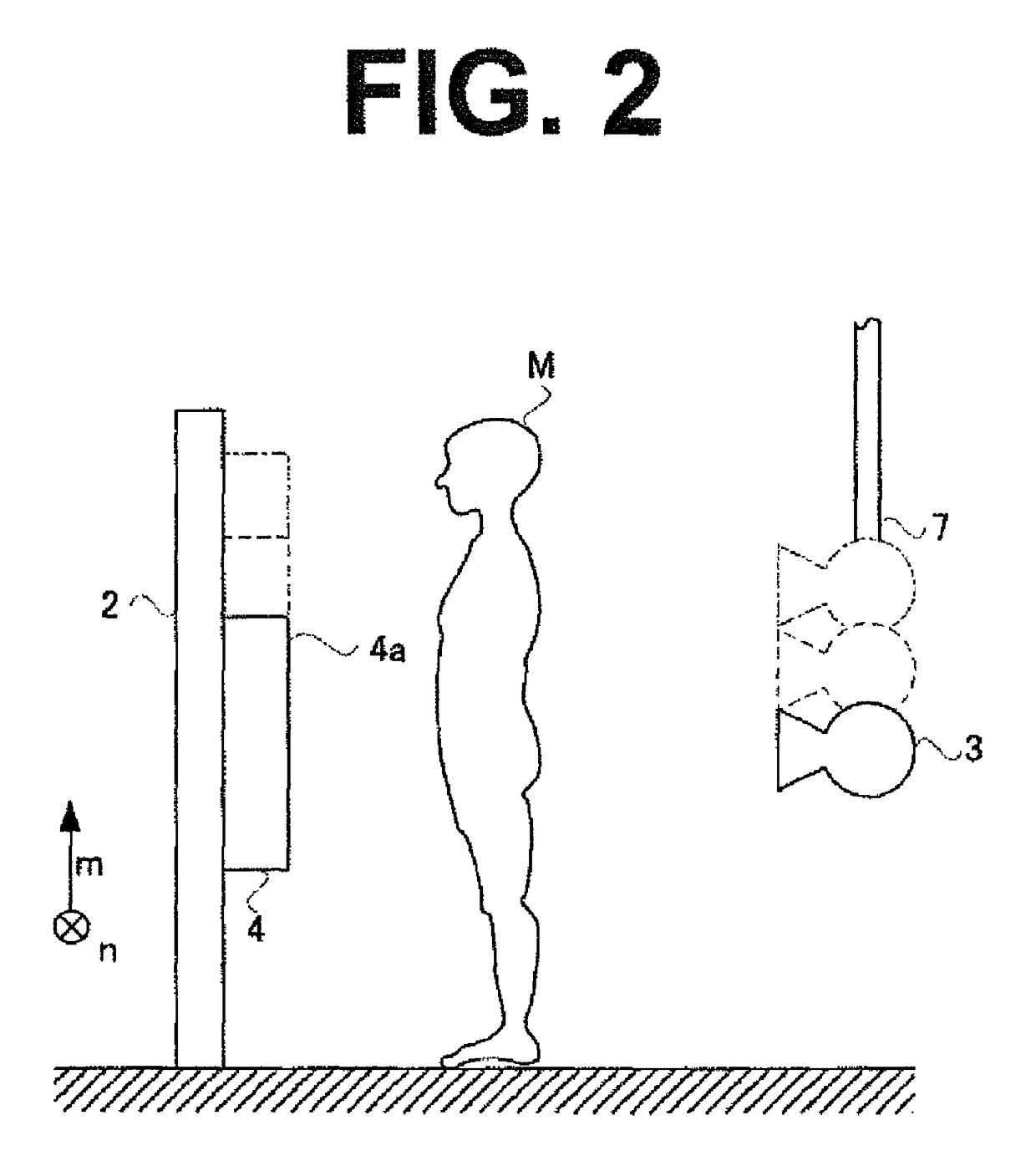Radiographic device
a technology of radiographic devices and figs, applied in the direction of radiation generation arrangements, medical science, diagnostics, etc., can solve problems such as the deviation of figs at the joint of images, and achieve the effect of reducing excessive load
- Summary
- Abstract
- Description
- Claims
- Application Information
AI Technical Summary
Benefits of technology
Problems solved by technology
Method used
Image
Examples
embodiment 1
[0046]The following firstly describes an X-ray apparatus 1 according to Embodiment 1. Here, the configuration of Embodiment 1 adopts an improvement over a conventional manual mode. The X-ray apparatus 1 images a standing subject M. As illustrated in FIG. 1, the X-ray apparatus 1 includes a strut 2 extending vertically from the floor, an X-ray tube 3 emitting X-rays, an FPD 4 supported on the strut 2, and a suspending holder 7 extending vertically and held on the ceiling. The suspending holder 7 suspendingly holds the X-ray tube 3. The X-ray tube 3 corresponds to the radiation source in the present invention. The FPD 4 corresponds to the detecting means in the present invention.
[0047]A collimator 3a is provided for restricting an area of X-rays emitted from the X-ray tube 3. An operator adjusts a leaf of the collimator 3a, and correspondingly an emission area of X-rays becomes larger or smaller.
[0048]The FPD 4 is slidable vertically relative to the strut 2. The suspending holder 7 is...
embodiment 2
[0085]The following describes an X-ray apparatus 1 according to Embodiment 2. The X-ray apparatus 1 according to Embodiment 2 is similar to Embodiment 1 in its configuration. Accordingly, description about the configuration of Embodiment 2 common to that of Embodiment 1 is to be omitted. The configuration of Embodiment 2 is improvement of the conventional automatic mode.
[0086]Embodiment 2 differs from Embodiment 1 in that long-length radiography for the second and subsequent times is performed automatically. That is, the X-ray apparatus 1 in Embodiment 2 allows successive radiography of a plurality of images by merely one-time instruction to activate the X-ray tube 3 and one-time instruction to emit X-rays by an operator.
[0087]FIGS. 9(A), 9(B) illustrate a timing chart illustrating performance of long-length radiography with the X-ray apparatus 1 of Embodiment 2. An upper sequence 9(A) of the drawing indicates a state of the X-ray tube 3, and a lower sequence (9B) indicates a state ...
PUM
 Login to View More
Login to View More Abstract
Description
Claims
Application Information
 Login to View More
Login to View More - R&D
- Intellectual Property
- Life Sciences
- Materials
- Tech Scout
- Unparalleled Data Quality
- Higher Quality Content
- 60% Fewer Hallucinations
Browse by: Latest US Patents, China's latest patents, Technical Efficacy Thesaurus, Application Domain, Technology Topic, Popular Technical Reports.
© 2025 PatSnap. All rights reserved.Legal|Privacy policy|Modern Slavery Act Transparency Statement|Sitemap|About US| Contact US: help@patsnap.com



